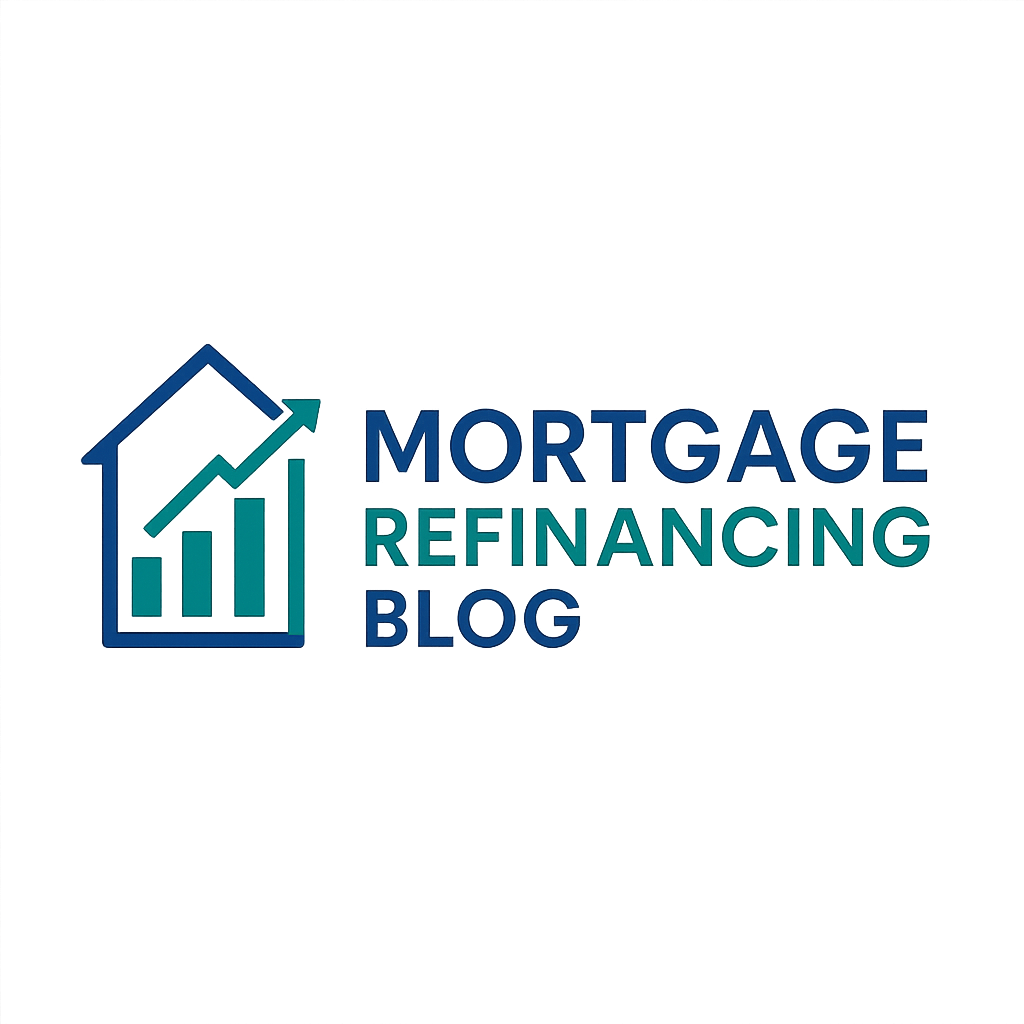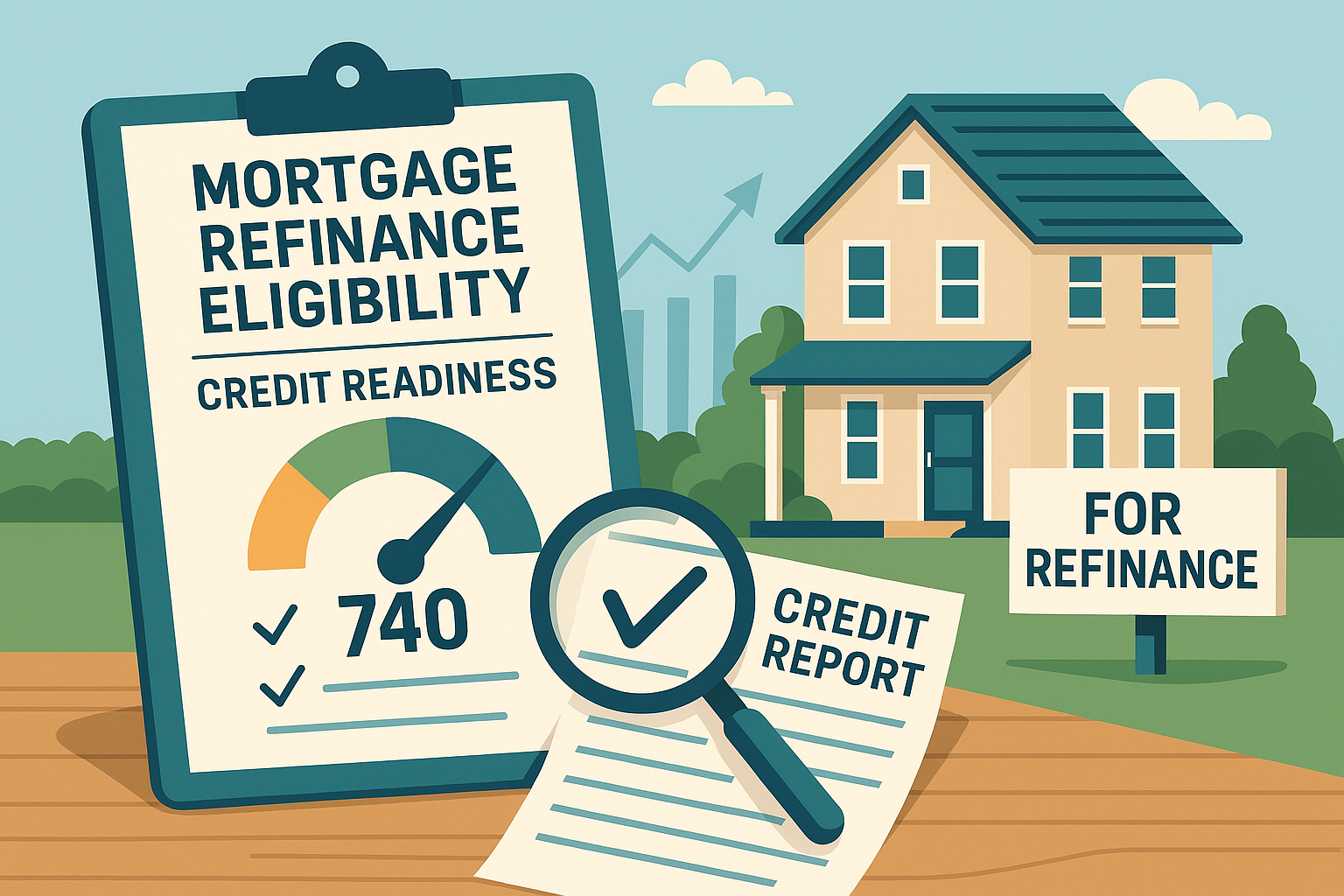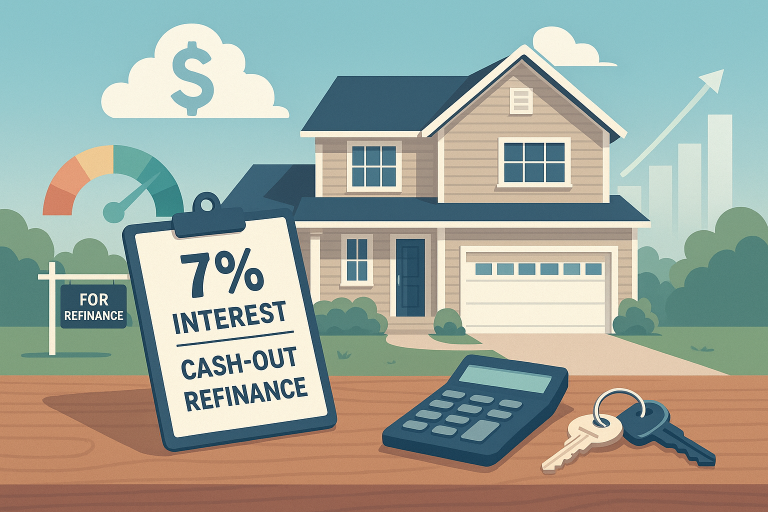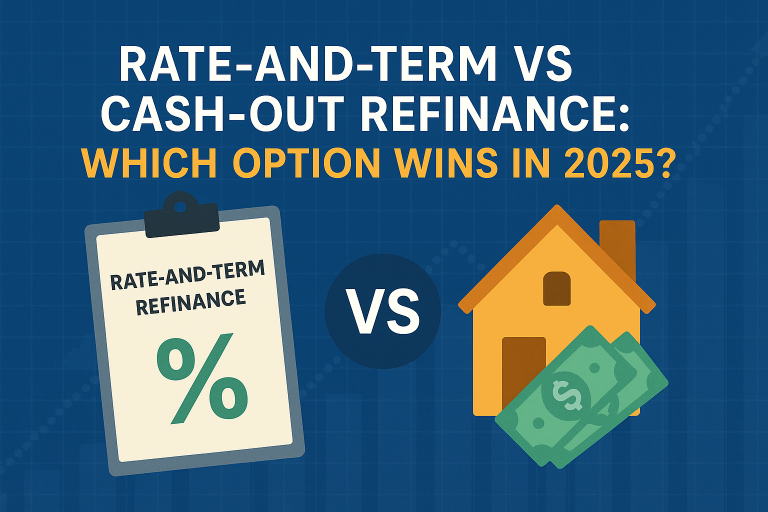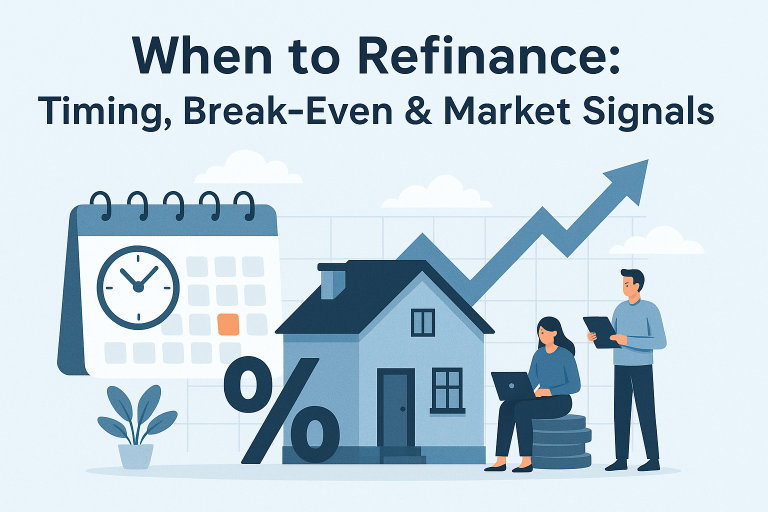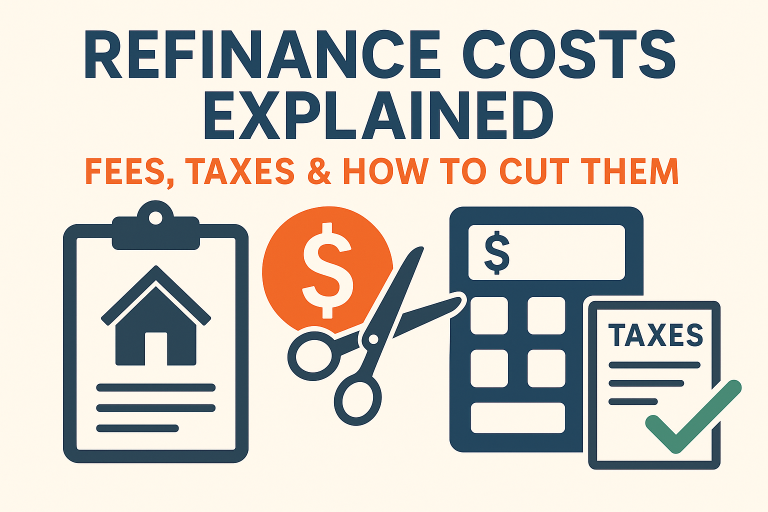Getting Approved for a Refinance: Credit Prep, Lender Shopping & Application Checklist
Credit Readiness Is Your Foundation
Your credit profile serves as the cornerstone of refinancing approval, determining not only whether you qualify but also the rates and terms you’ll receive. In 2025’s competitive lending environment, most conventional lenders require minimum credit scores of 660-680, with the best rates reserved for borrowers above 740[1]. However, credit score requirements vary significantly by loan type and lender, with some programs accepting scores as low as 620 for conventional loans and 550 for VA refinances[2]. Beyond the score itself, lenders scrutinize your credit history for payment patterns, debt utilization, and recent credit inquiries. A single missed payment in the past 12 months can impact your approval odds, while high credit card balances can push your debt-to-income ratio above acceptable limits. Preparing your credit profile before applying—including paying down balances, correcting errors, and avoiding new credit inquiries—can mean the difference between approval and denial, potentially saving thousands in interest over your loan’s lifetime.
Minimum Credit & DTI Benchmarks
Credit Score Requirements by Loan Type
Conventional Loans form the backbone of refinancing options, with most lenders requiring minimum credit scores of 620-660. However, achieving the best rates typically requires scores above 740. The rate differential can be substantial: borrowers with 760+ credit scores may receive rates 0.5-1.0% lower than those with 620-660 scores[3].
FHA Refinancing offers more flexibility with credit requirements, accepting scores as low as 580 for cash-out refinances and 500 for rate-and-term refinances with 10% down payment equivalent in equity. However, FHA loans require mortgage insurance premiums that can offset the benefits of lower credit requirements.
VA Refinancing provides the most lenient credit standards, with some lenders accepting scores as low as 550 for Interest Rate Reduction Refinance Loans (IRRRLs). VA cash-out refinances typically require higher scores around 620-640.
USDA Refinancing generally requires 640+ credit scores, though some flexibility exists for borrowers with compensating factors like significant cash reserves or stable employment history.
Debt-to-Income Ratio Limits
Conventional Loan DTI Standards typically cap total debt-to-income ratios at 43% for standard approvals, though qualified mortgage rules allow up to 45% with strong compensating factors. Some lenders may approve ratios up to 50% for borrowers with excellent credit and substantial assets[4].
FHA DTI Requirements offer more flexibility, allowing ratios up to 50% with proper documentation and creditworthiness. The FHA’s compensating factor system can sometimes accommodate even higher ratios.
VA DTI Guidelines don’t impose hard limits but use a residual income calculation to ensure borrowers can meet living expenses after mortgage payments. This approach can benefit borrowers with higher incomes in expensive areas.
Specialized Programs like Fannie Mae’s RefiNow allow DTI ratios up to 65% for qualifying borrowers at or below area median income, expanding refinancing access for moderate-income homeowners[5].
How to Boost Your Score Fast
Immediate Impact Strategies
Credit Utilization Optimization provides the fastest score improvement opportunity. Pay down credit card balances to below 10% of available limits, with the most significant impact occurring when balances drop below 5%. This strategy can improve scores by 20-50 points within 30 days.
Rapid Rescoring through your lender can update your credit profile within 3-5 business days after paying down balances or correcting errors. This service costs $25-$50 per credit bureau but can be invaluable for borrowers close to approval thresholds.
Authorized User Strategy involves being added to a family member’s account with excellent payment history and low utilization. This can boost scores within 30 days, though the impact varies by credit bureau and existing profile.
Medium-Term Improvements
Error Correction through formal disputes can improve scores within 30-45 days. Focus on inaccurate late payments, incorrect balances, and accounts that don’t belong to you. The Consumer Financial Protection Bureau estimates that 20% of consumers have errors on their credit reports.
Payment History Optimization involves ensuring all current payments are made on time while addressing any recent late payments. Consider goodwill letters to creditors for isolated late payments, explaining circumstances and requesting removal.
Account Management includes avoiding closing old accounts (which reduces average account age) and limiting new credit applications during the refinancing process. Multiple mortgage inquiries within 14-45 days typically count as a single inquiry for scoring purposes.
Strategic Debt Management
Debt Consolidation can improve DTI ratios while potentially boosting credit scores. However, avoid closing paid-off accounts immediately, as this can reduce available credit and increase utilization ratios.
Balance Transfer Strategies can optimize utilization across multiple cards while reducing interest costs. The key is maintaining low overall utilization while spreading balances to avoid maxing out individual cards.
Comparing Lenders & Offers
Understanding APR vs. Interest Rate
Annual Percentage Rate (APR) provides the most accurate comparison tool, incorporating both interest rate and fees into a single metric. A loan with a 6.5% interest rate but $5,000 in fees will have a higher APR than a 6.75% rate with $2,000 in fees.
Points and Rate Relationships vary significantly between lenders. Some offer lower rates with higher points, while others provide rate discounts for relationship customers. Calculate the break-even point for points: each point typically reduces rates by 0.25% and costs 1% of the loan amount.
Lender Types and Their Advantages
Bank Lenders often provide relationship pricing for existing customers, potentially offering rate discounts or fee waivers. However, they may have stricter underwriting standards and longer processing times.
Credit Union Lenders typically offer competitive rates for members, with more flexible underwriting and personalized service. Membership requirements vary, but many accept new members through simple association fees.
Online Lenders frequently provide the most competitive rates due to lower overhead costs. They excel in efficiency and technology but may lack local market knowledge and face-to-face service.
Mortgage Brokers can shop multiple lenders simultaneously, potentially finding better deals than individual borrowers. However, broker fees can offset savings, and borrowers lose direct lender relationships.
Comparison Metrics Beyond Rate
Closing Cost Structures vary dramatically between lenders. Some advertise low rates but charge higher fees, while others provide transparent pricing with moderate rates and reasonable costs.
Processing Speed becomes crucial in volatile rate environments. Lenders with 30-day closings may provide better value than those requiring 45-60 days, especially when rates are rising.
Customer Service Quality impacts the overall experience and can prevent costly delays. Research lender reviews, particularly focusing on communication, problem resolution, and closing timelines.
Understanding Rate-Locks & Float-Downs
Rate Lock Mechanics
Standard Rate Locks typically last 30-60 days at no cost, protecting borrowers from rate increases during processing. Extended locks (90+ days) usually cost 0.125-0.25% of the loan amount but provide additional security.
Lock Timing Strategy requires balancing market conditions with processing timelines. Locking too early can miss rate improvements, while waiting too long risks rate increases during processing.
Float-Down Options
Float-Down Provisions allow borrowers to capture lower rates after locking, typically for a fee of 0.125-0.25% of the loan amount. Most lenders require rate drops of 0.25-0.5% to exercise float-down options[6].
Automatic Float-Down products from some lenders provide rate protection without additional fees, though initial rates may be slightly higher to compensate for this feature.
One-Time vs. Multiple Use float-downs vary by lender. Some allow single rate adjustments, while others permit multiple reductions during the lock period.
Market Timing Considerations
Rate Environment Analysis helps determine optimal lock strategies. In rising rate environments, immediate locks provide protection, while falling rate markets favor float-down options or delayed locks.
Economic Calendar Awareness enables strategic timing around major economic releases that typically impact rates, such as employment reports, inflation data, and Federal Reserve announcements.
Required Documents Checklist
Income and Employment Documentation
W-2 Employees need comprehensive income verification including recent pay stubs (typically last 30 days), W-2 forms from the previous two years, and employment verification letters from HR departments.
Self-Employed Borrowers face additional documentation requirements including tax returns with all schedules for the past two years, profit and loss statements, and potentially certified financial statements for complex business structures.
Additional Income Sources require specific documentation: rental income needs lease agreements and tax returns showing rental history, investment income requires account statements and tax documentation, and pension/Social Security income needs award letters.
Asset and Financial Documentation
Bank Statements from the past 2-3 months for all accounts, including checking, savings, and investment accounts. Lenders scrutinize large deposits and may require explanation letters for unusual transactions.
Investment Account Statements for stocks, bonds, mutual funds, and retirement accounts. Some lenders require current market valuations rather than historical statements.
Gift Documentation if family members are providing funds for closing costs or down payments. This requires gift letters and documentation of the donor’s ability to provide funds.
Property and Mortgage Documentation
Current Mortgage Statements showing current balance, payment history, and escrow account details. Lenders may request 12 months of payment history for refinancing approval.
Property Tax Records and homeowners insurance policies to verify current coverage and costs. Some lenders require updated insurance coverage amounts based on current property values.
Homeowners Association Documentation if applicable, including HOA dues, bylaws, and any special assessments that might affect property values or monthly costs.
Timeline from Application to Closing
Week 1-2: Initial Processing
Application Submission begins the formal process, typically completed online or during consultations with loan officers. Complete applications include all required documentation and signed authorization forms.
Credit Review and Verification occurs within 24-48 hours, with lenders pulling credit reports and beginning income verification. This stage may reveal additional documentation needs.
Initial Underwriting Review provides preliminary approval or identifies conditions requiring additional information. Strong applications may receive conditional approval within 3-5 business days.
Week 3-4: Property Valuation and Final Underwriting
Appraisal Ordering and Completion typically occurs during the second week, with appraisals scheduled within 7-10 days of ordering. Complex properties or busy markets may extend this timeline.
Final Underwriting involves comprehensive review of all documentation, with underwriters verifying income, assets, and property values. This stage may require additional documentation or explanation letters.
Conditional Approval includes specific requirements that must be met before closing, such as updated bank statements, employment verification, or proof of hazard insurance.
Week 4-6: Closing Preparation
Clear to Close status indicates all conditions have been met and closing can be scheduled. This typically occurs 3-5 days before the actual closing date.
Closing Disclosure Review provides final loan terms and costs, required at least three business days before closing. Material changes may require additional waiting periods.
Final Verification includes employment confirmation and account verification immediately before closing to ensure no material changes have occurred.
Factors Affecting Timeline
Borrower Responsiveness significantly impacts processing speed. Prompt document submission and quick responses to lender requests can reduce timelines by 1-2 weeks.
Market Conditions affect processing times, with busy periods potentially extending timelines due to appraiser availability and lender workload.
Property Complexity can extend appraisal and underwriting timelines, particularly for unique properties, condominiums, or properties with unusual features.
Avoiding Common Denials
Credit-Related Denials
Recent Credit Inquiries can trigger denials, particularly multiple inquiries outside the typical mortgage shopping window. Avoid applying for new credit cards or loans during the refinancing process.
Payment History Issues remain the most common denial reason. Even single late payments within the past 12 months can impact approval, particularly for prime rate programs.
High Credit Utilization can push borrowers above DTI limits or signal financial stress to underwriters. Maintain credit card balances below 30% of limits throughout the process.
Income and Employment Denials
Employment Changes during processing can trigger denials, even when new employment offers higher income. Avoid job changes during refinancing unless absolutely necessary.
Undocumented Income creates approval challenges, particularly for self-employed borrowers or those with complex income structures. Ensure all income sources are properly documented and verifiable.
Seasonal Income Variations can complicate approval for borrowers with irregular income patterns. Lenders may require additional documentation or average income calculations over longer periods.
Property and Equity Issues
Low Appraisal Values can eliminate refinancing options, particularly for cash-out refinances or borrowers with limited equity. Consider ordering second appraisals or addressing property condition issues.
Property Condition Problems identified during appraisal can delay or prevent approval. Address obvious maintenance issues before appraisal scheduling.
Loan-to-Value Ratio Limitations can restrict refinancing options, particularly for borrowers with limited equity or declining property values.
Documentation and Process Errors
Incomplete Applications cause delays and potential denials. Ensure all required documentation is provided upfront and respond quickly to additional requests.
Large Unexplained Deposits can trigger money laundering concerns and require extensive documentation. Maintain normal banking patterns during the application process.
Insurance Coverage Gaps can prevent closing. Ensure continuous hazard insurance coverage and provide updated policies reflecting current property values.
Key Takeaways
Refinancing approval in 2025 requires careful preparation across multiple dimensions: credit optimization, comprehensive documentation, strategic lender selection, and avoiding common pitfalls. Credit scores above 740 provide access to the best rates, while DTI ratios below 43% ensure smoother approval processes.
The most successful refinancing applications result from thorough preparation before applying, including credit score optimization, document organization, and realistic assessment of qualification likelihood. Borrowers who address potential issues proactively experience faster processing and better outcomes.
Lender comparison should focus on APR rather than interest rates alone, considering closing costs, processing speed, and customer service quality. Rate locks and float-down options provide valuable protection in volatile markets but require strategic timing and cost consideration.
Documentation requirements have become more stringent, with lenders requiring comprehensive verification of income, assets, and employment stability. Self-employed borrowers face additional challenges and should prepare extensive financial documentation.
Common denial reasons include credit issues, employment changes, property valuation problems, and incomplete documentation. Avoiding these pitfalls requires careful planning and consistent communication with lenders throughout the process.
The typical refinancing timeline spans 30-45 days, though borrower preparation and market conditions can significantly impact processing speed. Early preparation and responsive communication can reduce timelines and improve approval odds.
Answer Engine Snapshot
Key Refinancing Approval Requirements:
• Credit Score Minimums: 620 conventional, 580 FHA, 550 VA, 660+ for best rates • DTI Ratio Limits: 43% conventional, 50% FHA, 65% special programs, varies by compensating factors • Documentation Timeline: 2-3 weeks for complete document collection, 30-45 days total processing • Common Denial Reasons: High DTI (40%), credit issues (30%), employment changes (15%), low appraisal (10%) • Rate Lock Strategy: 30-60 days standard, float-down costs 0.125-0.25%, exercise threshold 0.25-0.5% • Fast Credit Boost: Pay down cards below 10% utilization, dispute errors, rapid rescoring 3-5 days • Lender Comparison: Focus on APR not rate, compare closing costs, processing speed, customer service • Best Preparation: Gather docs early, avoid credit changes, maintain employment stability, address property issues
Required Documents Checklist
| Document Category | Required Items | Timeframe | Self-Employed Additional |
|---|---|---|---|
| Income Verification | Pay stubs, W-2s, tax returns | Last 30 days/2 years | P&L statements, 1099s |
| Employment | Verification letter, contact info | Current | Business license, contracts |
| Assets | Bank statements, investment accounts | 2-3 months | Business bank statements |
| Current Mortgage | Payment history, current statement | 12 months | Property management records |
| Property | Insurance policy, tax records | Current year | Rental agreements if applicable |
| Identification | Driver’s license, Social Security card | Current | Business documentation |
| Credit | Explanation letters for issues | As needed | Business credit reports |
| Debt | All loan statements, credit cards | Current | Business debt documentation |
Frequently Asked Questions
Q: What credit score do I need to refinance in 2025? A: Most conventional lenders require 620-660 minimum, with best rates at 740+. FHA accepts 580+, VA loans as low as 550, but higher scores unlock better rates and terms.
Q: How long does the refinancing process take? A: Typically 30-45 days from application to closing, though borrower preparation and market conditions can affect timelines. Complex situations may extend to 60 days.
Q: What’s the maximum debt-to-income ratio for refinancing? A: Conventional loans typically allow 43% DTI, FHA up to 50%, and special programs up to 65%. Higher ratios may qualify with strong compensating factors.
Q: Should I lock my rate immediately or wait? A: In rising rate environments, lock quickly. In falling markets, consider float-down options or delayed locks. Standard 30-60 day locks are usually free.
Q: What documents do I need for refinancing? A: Essential documents include pay stubs, W-2s, tax returns, bank statements, current mortgage statement, and property insurance. Self-employed borrowers need additional business documentation.
Q: What are the most common reasons for refinancing denial? A: High debt-to-income ratios, credit issues, employment changes during processing, low property appraisals, and incomplete documentation are the primary denial reasons.
